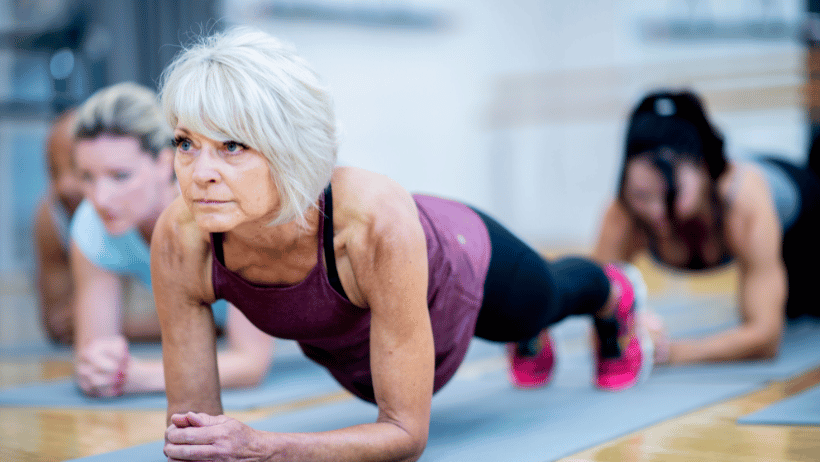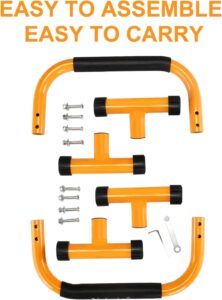If you’re looking to build strength and flexibility in a fun and effective way, look no further than these 5 essential calisthenics exercises. Whether you’re a beginner or a seasoned fitness enthusiast, these exercises are designed to challenge your body and help you achieve your fitness goals. From push-ups to squats, this article will guide you through each exercise, providing step-by-step instructions and tips for proper form. Get ready to take your workout to the next level with these 5 essential calisthenics exercises!
5 Essential Calisthenics Exercises
Calisthenics exercises offer a great way to build strength and flexibility without the need for any equipment or weights. Whether you’re a beginner or a seasoned fitness enthusiast, incorporating these five essential calisthenics exercises into your routine can provide numerous benefits. In this article, we will explore the benefits, proper form, variations, and sample workout routines for each of these exercises. So let’s dive in and discover how push-ups, squats, plank, lunges, and mountain climbers can take your fitness journey to the next level!
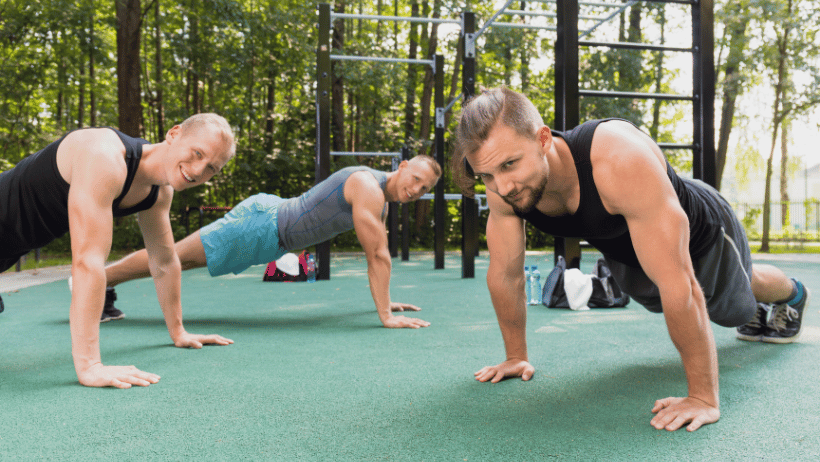
Exercise 1: Push-Ups
Push-ups are widely regarded as one of the most effective exercises for building upper body strength and promoting overall fitness. Let’s explore the benefits, proper form, variations, and even a sample workout routine involving push-ups.
Benefits of Push-Ups
Push-ups offer a multitude of benefits that make them a staple in any workout routine. Firstly, they help improve upper body strength by engaging muscles such as the chest, shoulders, triceps, and core. Secondly, push-ups involve multiple muscle groups, providing a full-body workout that can improve overall muscle tone and definition. Additionally, they enhance core stability, which is crucial for maintaining proper posture and preventing injuries. Lastly, push-ups contribute to functional fitness, as they mimic movements used in everyday activities.
Proper Form for Push-Ups
To get the most out of your push-ups and avoid potential injuries, it’s essential to maintain the proper form. Start by placing your hands on the ground slightly wider than shoulder-width apart, with your fingers pointing forward. Your body should form a straight line from your head to your heels. Engage your core muscles and lower your body until your chest grazes the ground, then push back up to the starting position. Remember to breathe in as you lower your body and exhale as you push back up.
Variations of Push-Ups
If you’re looking to add variety to your push-up routine or increase the intensity, try incorporating different variations of push-ups. Some popular variations include wide-grip push-ups, diamond push-ups, incline and decline push-ups, one-arm push-ups, and plyometric push-ups. Each variation targets specific muscle groups and adds an extra challenge to your workout.
Sample Workout Routine with Push-Ups
Ready to integrate push-ups into your workout routine? Here’s a sample routine that incorporates push-ups along with other essential calisthenics exercises:
- Warm-Up: Begin with dynamic stretches to prepare your muscles for the workout.
- Exercise 1: Push-Ups – Perform 3 sets of 10-12 reps. Take a short rest between sets.
- Exercise 2: Squats – Perform 3 sets of 12-15 reps. Squats will engage your lower body muscles.
- Exercise 3: Plank – Hold the plank position for 2 sets of 30-60 seconds. This exercise will challenge your core stability.
- Exercise 4: Lunges – Perform 3 sets of 10-12 reps per leg. Lunges will target your lower body muscles and improve balance.
- Exercise 5: Mountain Climbers – Perform 2 sets of 15-20 reps. This exercise will engage multiple muscle groups and boost your cardiovascular endurance.
- Cool-Down: Finish off with static stretches to help your muscles recover and prevent stiffness.
By following this sample routine, you can effectively incorporate push-ups into your workout and reap their numerous benefits.
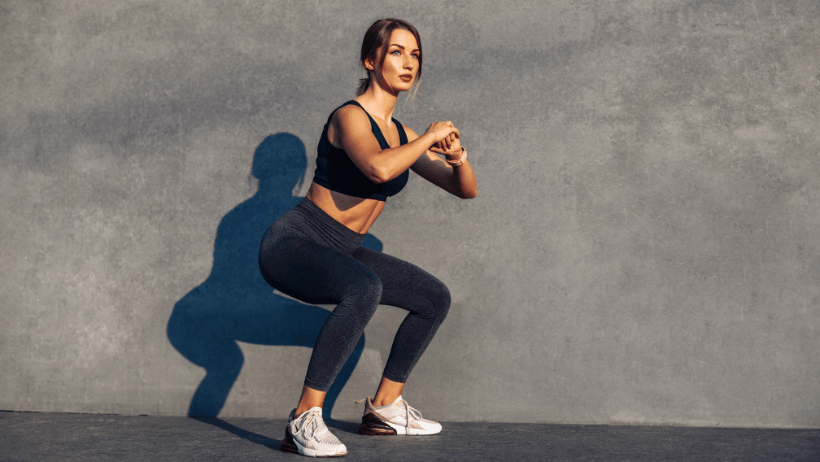
Exercise 2: Squats
Squats are another essential calisthenics exercise that targets the lower body muscles while also improving core stability and flexibility. Let’s delve into the benefits, proper form, variations, and a sample workout routine involving squats.
Benefits of Squats
Squats primarily focus on strengthening the lower body muscles, including the quadriceps, hamstrings, glutes, and calves. By continually challenging these muscles, squats can help increase muscle mass, tone, and definition. Additionally, squats require proper core engagement, leading to improved core stability and balance. Moreover, squatting regularly can enhance overall flexibility, enabling you to move more freely and with less risk of injury. Lastly, squats promote functional strength, making everyday movements easier and more efficient.
Proper Form for Squats
Executing squats with proper form is crucial for maximizing results and minimizing the risk of injury. Begin by standing with your feet shoulder-width apart and your toes slightly turned out. Lower your body by bending at the hips and knees, keeping your chest lifted and your weight centered over your feet. Aim to bring your thighs parallel to the ground, then push through your heels to return to the starting position. Remember to breathe in as you lower your body and exhale as you stand back up.
Variations of Squats
To add variety and intensity to your squat routine, consider incorporating different squat variations. Some popular variations include sumo squats, pistol squats, jump squats, Bulgarian split squats, and goblet squats. Each variation targets different muscle groups and adds a unique challenge to your workout.
Sample Workout Routine with Squats
Ready to include squats in your workout routine? Here’s a sample workout routine that combines squats with other essential calisthenics exercises:
- Warm-Up: Start with a light jog to increase your heart rate and warm up your muscles.
- Exercise 1: Mountain Climbers – Perform 2 sets of 15-20 reps. This exercise engages multiple muscle groups and boosts cardiovascular endurance.
- Exercise 2: Push-Ups – Perform 3 sets of 10-12 reps. Push-ups strengthen your upper body muscles.
- Exercise 3: Squats – Perform 3 sets of 12-15 reps. Squats engage the lower body muscles and improve core stability.
- Exercise 4: Plank – Hold the plank position for 2 sets of 30-60 seconds. This exercise further challenges your core muscles.
- Exercise 5: Lunges – Perform 3 sets of 10-12 reps per leg. Lunges target the lower body muscles and improve balance.
- Cool-Down: Conclude with stretching exercises to promote muscle recovery and flexibility.
By following this sample routine, you can effectively integrate squats into your workout regimen and experience their numerous benefits.
Exercise 3: Plank
The plank exercise is a core-strengthening powerhouse that can improve stability, posture, and overall strength. In this section, we will explore the benefits of planks, proper form, variations, and a sample workout routine incorporating this exercise.
Benefits of Plank
Plank exercises engage the core muscles, which include the abdominals, lower back, and obliques. By holding your body in a plank position, you can increase your core strength, improve posture, and promote overall stability. Planks also target the muscles in your shoulders, arms, and legs to a lesser extent, providing a full-body workout. Additionally, regular plank exercises can enhance your balance and help prevent lower back pain.
Proper Form for Plank
To perform a plank correctly, start by getting into a push-up position, ensuring your hands are directly under your shoulders. Lower your body onto your forearms, keeping your elbows aligned with your shoulders. Your body should form a straight line from your head to your heels. Hold this position, engaging your core muscles and maintaining a neutral neck and spine. Remember to breathe throughout the exercise and avoid sagging or raising your hips.
Variations of Plank
To add variety to your plank routine and engage different muscle groups, try incorporating variations of the traditional plank. Some popular variations include side planks, forearm planks with leg lifts, plank jacks, and plank walks. Each variation targets specific muscle groups and adds an extra challenge to your plank workout.
Sample Workout Routine with Plank
Incorporate plank exercises into your workout routine with this sample plan:
- Warm-Up: Start with dynamic stretches to prepare your muscles for the workout.
- Exercise 1: Plank – Hold the position for 2 sets of 30-60 seconds. Focus on maintaining proper form and engaging your core muscles.
- Exercise 2: Push-Ups – Perform 3 sets of 10-12 reps. Push-ups will strengthen your upper body muscles.
- Exercise 3: Squats – Perform 3 sets of 12-15 reps. Squats engage the lower body muscles and improve core stability.
- Exercise 4: Lunges – Perform 3 sets of 10-12 reps per leg. Lunges target the lower body muscles and improve balance.
- Exercise 5: Mountain Climbers – Perform 2 sets of 15-20 reps. This exercise engages multiple muscle groups and boosts cardiovascular endurance.
- Cool-Down: Conclude with stretching exercises to promote muscle recovery and flexibility.
By incorporating planks into this sample routine, you can strengthen your core muscles and enjoy the benefits of improved stability and posture.
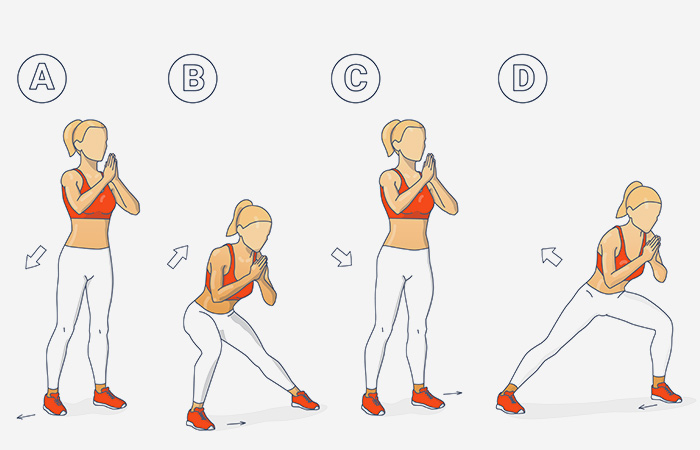
This image is property of cdn2.stylecraze.com.
Exercise 4: Lunges
Lunges are a fantastic calisthenics exercise that targets the lower body muscles while also improving balance and coordination. Let’s delve into the benefits of lunges, proper form, variations, and a sample workout routine that includes lunges.
Benefits of Lunges
Lunges primarily target the muscles in the lower body, including the quadriceps, hamstrings, glutes, and calves. By consistently performing lunges, you can increase lower body strength, improve muscle tone, and enhance overall stability. Additionally, lunges activate the core muscles, enhancing core strength and stability. Lunges are a functional exercise that mimics movements used in daily activities such as walking and climbing stairs. Moreover, lunges can help correct muscle imbalances and improve flexibility.
Proper Form for Lunges
Executing lunges with proper form is crucial to maximize their benefits and prevent injuries. Begin by standing tall with your feet hip-width apart. Take a step forward with your right foot, keeping your spine straight and core engaged. Lower your body by bending both knees until your front thigh is parallel to the ground, and your back knee is slightly above the floor. Push through your front heel to return to the starting position. Repeat on the other leg, alternating sides throughout the exercise. Remember to breathe throughout the movement and maintain a tall posture.
Variations of Lunges
To add variety and increase the challenge of your lunge workout, consider incorporating different lunge variations. Some popular variations include walking lunges, reverse lunges, lateral lunges, jumping lunges, and curtsy lunges. Each variation targets specific muscle groups and provides a unique stimulus to your lower body muscles.
Sample Workout Routine with Lunges
Incorporate lunges into your workout routine with this sample plan:
- Warm-Up: Begin with dynamic stretches to prepare your muscles for the workout.
- Exercise 1: Lunges – Perform 3 sets of 10-12 reps per leg. Focus on maintaining proper form and engaging the targeted muscles.
- Exercise 2: Push-Ups – Perform 3 sets of 10-12 reps. Push-ups will strengthen your upper body muscles.
- Exercise 3: Squats – Perform 3 sets of 12-15 reps. Squats engage the lower body muscles and improve core stability.
- Exercise 4: Plank – Hold the position for 2 sets of 30-60 seconds. This exercise challenges your core muscles.
- Exercise 5: Mountain Climbers – Perform 2 sets of 15-20 reps. Mountain climbers engage multiple muscle groups and boost cardiovascular endurance.
- Cool-Down: Finish off with static stretches to promote muscle recovery and flexibility.
By incorporating lunges into this sample routine, you can target your lower body muscles and enjoy the benefits of improved strength, balance, and flexibility.
Exercise 5: Mountain Climbers
Mountain climbers are a dynamic and challenging calisthenics exercise that provides a full-body workout while also targeting the cardiovascular system. In this section, we will explore the benefits of mountain climbers, proper form, variations, and a sample workout routine that includes this exercise.
Benefits of Mountain Climbers
Mountain climbers are a compound exercise that engages multiple muscle groups simultaneously, making it an efficient calorie-burning exercise. By performing mountain climbers regularly, you can improve cardiovascular endurance, burn fat, and strengthen your upper body, lower body, and core muscles. Moreover, mountain climbers enhance coordination, agility, and overall athletic performance. This exercise also increases flexibility in the hip flexors and hamstrings.
Proper Form for Mountain Climbers
To perform mountain climbers correctly, start in a high plank position with your hands directly under your shoulders. Your body should form a straight line from your head to your heels. Begin by lifting your right foot off the ground and bending your knee, bringing it towards your chest. As you extend your right leg back, simultaneously bring your left knee towards your chest. Alternate legs in a fluid, running-like motion while maintaining proper plank form. Remember to engage your core and breathe consistently throughout the exercise.
Variations of Mountain Climbers
To challenge yourself and target different muscle groups, consider incorporating variations of mountain climbers into your routine. Some popular variations include cross-body mountain climbers, spider mountain climbers, side plank mountain climbers, and climber planks. Each variation adds a unique twist to the exercise and further engages specific muscle groups.
Sample Workout Routine with Mountain Climbers
Ready to include mountain climbers in your workout routine? Here’s a sample plan that integrates mountain climbers with other essential calisthenics exercises:
- Warm-Up: Start with light jogging or jumping jacks to raise your heart rate and warm up your muscles.
- Exercise 1: Mountain Climbers – Perform 2 sets of 15-20 reps. Focus on maintaining proper form and a controlled pace.
- Exercise 2: Push-Ups – Perform 3 sets of 10-12 reps. Push-ups strengthen your upper body muscles.
- Exercise 3: Squats – Perform 3 sets of 12-15 reps. Squats engage the lower body muscles and improve core stability.
- Exercise 4: Plank – Hold the position for 2 sets of 30-60 seconds. This exercise challenges your core muscles.
- Exercise 5: Lunges – Perform 3 sets of 10-12 reps per leg. Lunges target the lower body muscles and improve balance.
- Cool-Down: Conclude with stretching exercises to promote muscle recovery and flexibility.
By incorporating mountain climbers into this sample routine, you can elevate your heart rate, engage multiple muscle groups, and experience the benefits of improved cardiovascular endurance and overall strength.

In Conclusion
Calisthenics exercises offer a convenient and effective way to build strength and flexibility without the need for equipment. By incorporating these five essential exercises – push-ups, squats, plank, lunges, and mountain climbers – into your routine, you can experience numerous benefits such as improved upper body strength, engagement of multiple muscle groups, enhanced core stability, increased functional fitness, strengthened lower body muscles, improved core stability, enhanced flexibility, and increased functional strength. Remember to maintain proper form, experiment with variations to challenge yourself, and design a workout routine that suits your fitness level and goals. So, get ready to embrace the power of calisthenics and take your fitness journey to new heights!



